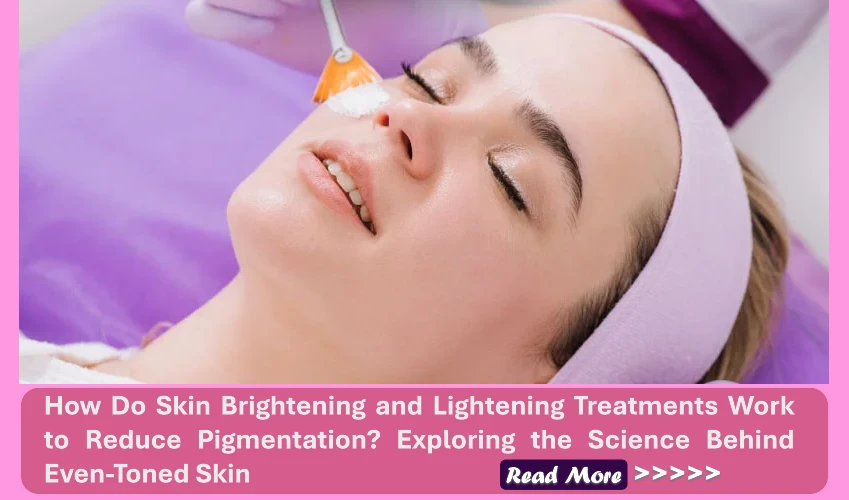How Do Skin Brightening and Lightening Treatments Work to Reduce Pigmentation? Exploring the Science Behind Even-Toned Skin
How Do Skin Brightening and Lightening Treatments Work to Reduce Pigmentation? Exploring the Science Behind Even-Toned Skin
Pigmentation is a natural process in which the skin produces melanin, the pigment responsible for skin color. However, various factors like sun exposure, hormonal changes, acne, and inflammation can cause an overproduction of melanin, leading to dark spots, uneven skin tone, or conditions like melasma. Skin brightening and lightening treatments are designed to reduce this excess pigmentation and promote a clearer, more radiant complexion. Here's how these treatments work to target and reduce pigmentation effectively.
Understanding Melanin and Pigmentation
Melanin is produced by skin cells called melanocytes. These cells are stimulated by UV rays, hormones, and skin trauma, leading to increased melanin synthesis. While melanin protects the skin from UV damage, too much of it concentrated in certain areas results in hyperpigmentation.
Mechanisms of Skin Brightening and Lightening Treatments
-
Inhibiting Melanin Production
Many treatments work by blocking the enzyme tyrosinase, which is essential in the melanin production process. When tyrosinase is inhibited, melanocytes produce less pigment, gradually lightening dark spots.-
Ingredients: Hydroquinone, kojic acid, arbutin, licorice extract, and vitamin C are commonly used for this purpose.
-
-
Exfoliation and Cell Turnover
Skin-brightening treatments often include chemical exfoliants like glycolic acid, lactic acid, or salicylic acid. These acids remove the outer layer of dead, pigmented skin cells and promote the growth of new, evenly pigmented skin.-
This process accelerates cell turnover, which helps fade discoloration over time.
-
-
Disruption of Pigment Transfer
Some ingredients work by blocking the transfer of melanin from melanocytes to the skin’s surface cells (keratinocytes). By interrupting this process, these treatments can prevent pigment from reaching the visible surface of the skin.-
Example: Niacinamide is a known agent that interferes with pigment transfer.
-
-
Laser and Light-Based Treatments
Laser treatments, such as Q-switched lasers, fractional lasers, and intense pulsed light (IPL), target melanin directly. These devices emit energy that breaks up pigment clusters within the skin, allowing the body to gradually eliminate them.-
These are especially effective for sunspots, freckles, and post-inflammatory hyperpigmentation.
-
-
Antioxidant Protection
Many brightening treatments include antioxidants like vitamin C or glutathione, which neutralize free radicals and reduce oxidative stress. This helps prevent new pigmentation from forming and supports overall skin health.
Why Consistency and Sun Protection Matter
Pigmentation treatments work gradually and require consistent use over weeks or months. Just as important is sun protection—without it, UV exposure can reverse the effects of treatment and worsen pigmentation. Daily use of a broad-spectrum sunscreen (SPF 30 or higher) is essential.
Conclusion
Skin brightening and lightening treatments reduce pigmentation by targeting melanin at various stages—its production, transfer, and appearance on the skin's surface. From topical agents to lasers, these therapies help achieve an even-toned complexion when used correctly and consistently. For best results and safety, it’s advisable to consult a dermatologist to choose the right treatment based on your skin type and pigmentation concerns.

Related Blog
What Causes Oily Skin and Can It Be Managed Naturally? Exploring Root Causes and Gentle Solutions
Aug 2, 2025 by Admin
General
What Are the Signs That You Have Sensitive Skin? Key Symptoms to Help You Identify This Delicate Skin Type
Aug 1, 2025 by Admin
General